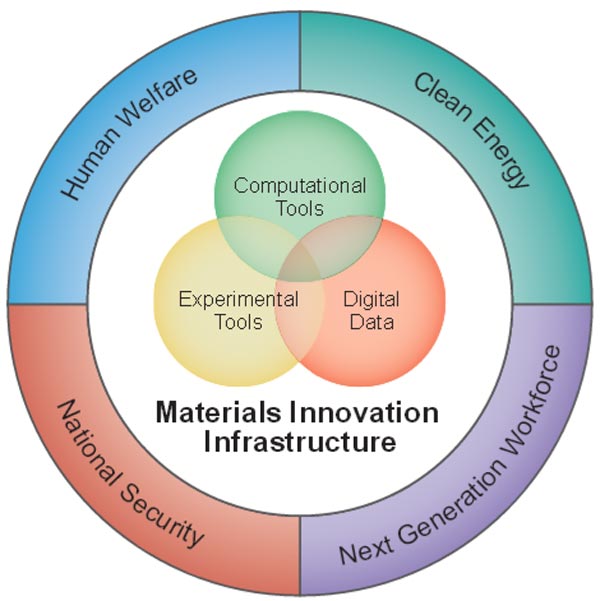
Sequencing the DNA of Things with the Materials Genomics Initiative

Since 2011, the Federal government has invested more than $250 million in research and development, and innovation infrastructure to support the use of advanced materials in existing and emerging industrial sectors in the United States. Full bi-partisan support exists for continually increasing the investment yearly.
Four researchers from the Department of Physics and Astronomy at West Virginia University, in conjunction with the federal Materials Genomics Initiative, are finding ways to more quickly design materials that will find their ways to the marketplace. Just as the Human Genome Initiative in the 1990s sequenced human DNA for the subsequent identification and analysis of genes, so too will the Materials Genome Initiative sequence materials for identifying new properties for a variety of applications.
Aldo Romero, Cheng Cen, David Lederman and James P. Lewis have received support for nearly $2 million to rapidly develop new materials under the initiative.
Some of the projects the researchers are pursuing:
• The rapid discovery of fluoride-based multiferroic materials, which could allow for generating electric fields that would support more efficient electronic devices or be electronic responsive under a magnetic field. The research is supported by a $1.2 million National Science Foundation award.
• The computational design of nano-catalysts from gold and silver alloys for use in energy and environmental science applications, such as in automobile exhaust cleanup. This research is supported by a roughly $560,000 National Science Foundation award.
“The Materials Genome Initiative paradigm will revolutionize the way we pursue new technologies with more efficient research teams that focus more on the application-driven properties of materials. But, the problems are extremely complex — in the human genome there are only the four DNA bases; a material’s genomics can consist of anything in the periodic table,” Lewis said.
Ferroelectric power affects a number of technologies, including cloud computing, sensing devices, solar energy systems and nanoelectronics. Conventional ferroelectric materials are complex and costly to produce.
Oxides, a ferroelectric material, develop an internal electric field because their ions move, causing positive/negative charges. If a magnet were to be placed on the material, an electric field would be generated. The problem is that the electricity generated is very small.
“It is very hard to develop a real application using oxides due to the observed small response. Therefore, we have to broaden our set of materials and see if we find some others with a larger response,” Romero said.
“We will focus on creating a material with an interface between an oxide and a fluoride. If we are able to understand the new physics, then we will be able to get new devices,” Romero said.
Lewis is working on the nano-catalyst research with Rongchao Jin, a synthetic chemist at Carnegie Mellon University who received a separate award. Lewis will computationally design the nano-catalysts from gold and silver alloys and Jin will synthesize these nano-catalysts based on Lewis’ discoveries.
Consider the energy and environmental science implications for the auto industry. In the case of auto emissions, instead of current catalysts that are inactive below 200 degrees Celsius, Lewis’ gold and silver nano-catalysts would be able to react at room temperature and help remove harmful emissions including carbon monoxide, nitrogen oxides and hydrocarbons.
Emissions are the measurable release of gases and other particles into the atmosphere from a specified activity and a specified period of time, such as burning fuels. The most common types generally come from automobiles, power plants and industrial companies.
Both Romero and Lewis have also received other awards related to materials genomics. Romero was recently awarded a Petroleum Research Fund grant from the American Chemical Society to design base lithium lightweight materials. And Lewis, was awarded a grant from the Department of Energy to develop new sorbent materials, or “nano-sponges” that utilize light to open and close nano-sized pores.
In 2013, Lewis was awarded a Fulbright that he used to travel to the Czech Republic explore ways to more quickly design materials for solar applications. The process to develop and test these devices can generally take more than 10 years, but Lewis’ aim remains to cut that time in half.
For more information about the WVU Department of Physics and Astronomy’s materials research and involvement in the Materials Genomics Initiative, contact James P. Lewis at james.lewis@mail.wvu.edu or Aldo Romero at Aldo.Romero@mail.wvu.edu.
Contact Information
Devon Copeland
Director of Communications and Marketing
devon.copeland@mail.wvu.edu
Phone: 304-293-6867












